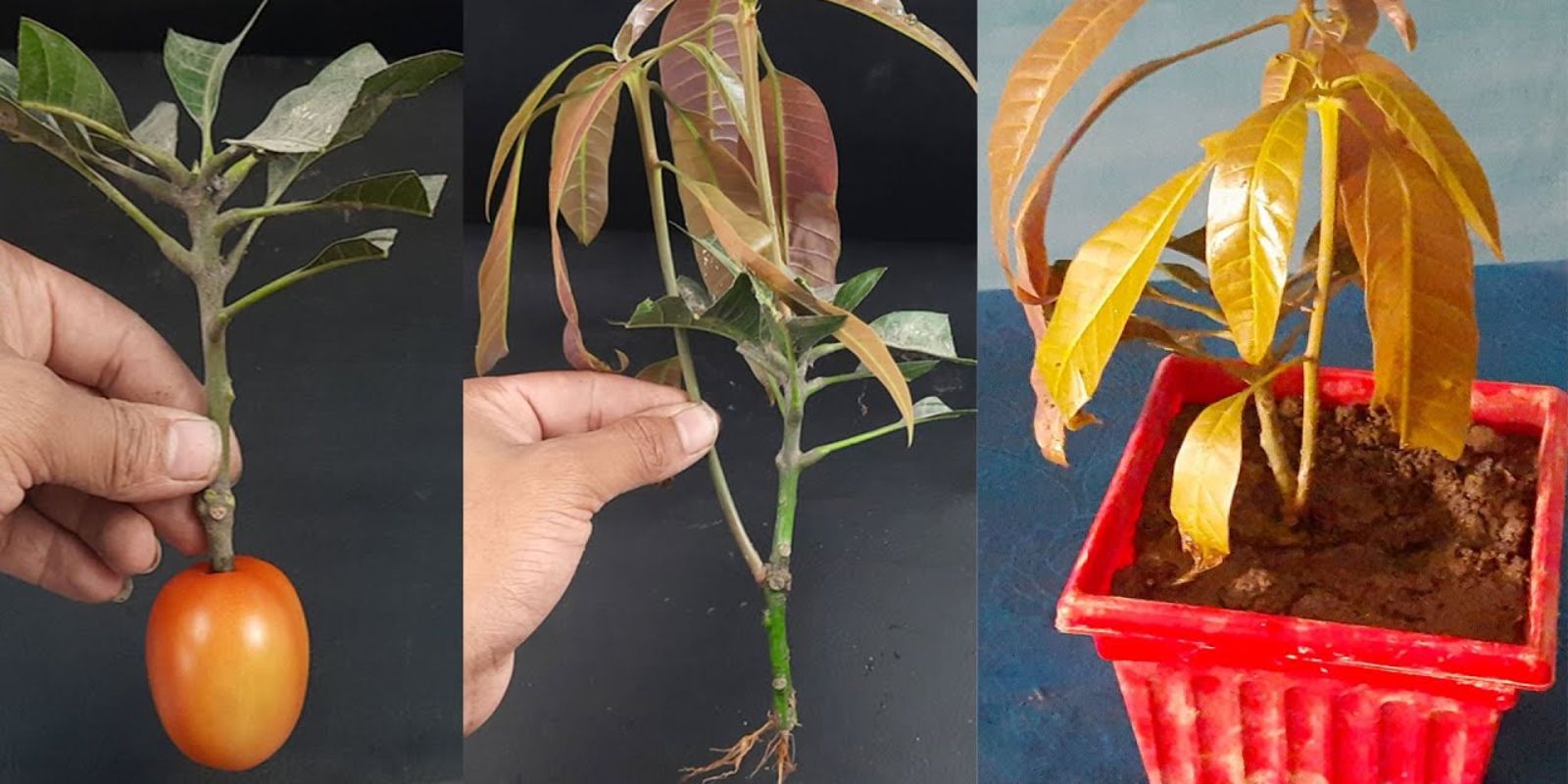Introduction
Gardening enthusiasts are always on the lookout for innovative ways to propagate plants, and this unique method of growing a mango plant cutting inside a tomato is both exciting and effective. Using a tomato as a natural rooting medium not only provides the mango cutting with essential nutrients but also creates a moist and stable environment for successful propagation. This eco-friendly gardening trick is easy to try at home and can yield surprising results.
In this article, we’ll dive deep into the step-by-step process, the science behind this method, and how to care for your mango plant as it grows. Whether you’re a seasoned gardener or a beginner, this fun experiment will bring new life to your gardening adventures.
Why Grow Mango in a Tomato?
Using a tomato for mango propagation is rooted in science. Tomatoes are rich in natural sugars, moisture, and nutrients that can enhance root development. The tomato acts as a protective cocoon, preventing the cutting from drying out while providing the perfect balance of air and moisture for rooting. This method mimics natural processes, making it a sustainable and low-cost way to grow mango plants.
Step-by-Step Guide to Growing a Mango Cutting in a Tomato
1. Select the Right Materials
To start, you’ll need the following:
- A healthy mango branch with new growth (semi-hardwood cutting).
- A ripe yet firm tomato.
- A sharp, clean knife or pruning shears.
- A small pot with well-draining soil.
- Optional: Rooting hormone for faster results.
2. Prepare the Mango Cutting
- Choose a branch about 6–8 inches long, with 3–4 nodes (the points where leaves grow).
- Make a clean cut at a 45-degree angle using a sterilized knife or pruning shears.
- Remove all leaves from the lower half of the cutting to avoid rot.
If you have rooting hormone, dip the cut end into the powder to encourage faster root formation.
3. Prepare the Tomato
- Pick a tomato that is ripe but still firm to the touch.
- Using your knife, cut a small, circular hole at the top of the tomato. The hole should be just large enough to insert the mango cutting without tearing the tomato apart.
4. Insert the Cutting
- Carefully push the cut end of the mango branch into the hole you’ve made in the tomato. Ensure the cutting is inserted deep enough so that it remains stable.
The tomato will act as a natural incubator, keeping the cutting hydrated and nourished as roots begin to form.
5. Plant the Tomato-Cutting Combo
- Fill a small pot with nutrient-rich, well-draining soil. A mix of garden soil, compost, and sand works well.
- Dig a hole in the soil and place the tomato (with the cutting) inside, covering it lightly with soil.
Ensure the cutting remains upright and is not buried too deeply. The top of the tomato should still be visible.
6. Water and Care
- Water the soil gently to keep it moist but not waterlogged.
- Place the pot in a warm, shaded area with indirect sunlight to prevent the cutting from drying out.
Keep the soil consistently moist during the first few weeks to promote root growth.
7. Monitor Growth and Progress
- After 2–3 weeks, gently tug on the cutting to check if roots have formed. If the cutting resists, it indicates successful rooting.
- Once the cutting has established roots, new leaves will begin to sprout, signaling the plant’s readiness for transplantation.
Caring for Your New Mango Plant
Once your mango cutting has successfully rooted, it’s time to provide proper care to ensure healthy growth.
1. Transplanting
- Transplant the young mango plant to a larger pot or directly into the ground in a sunny location.
- Mango trees thrive in well-draining soil with plenty of organic matter.
2. Watering
- Water deeply but infrequently, allowing the topsoil to dry out between waterings. Overwatering can cause root rot.
3. Fertilizing
- Feed your mango plant with a balanced fertilizer every 4–6 weeks during the growing season to encourage healthy growth and fruit production.
4. Pruning
- As your plant grows, prune it to shape the tree and remove any weak or damaged branches.
The Benefits of This Method
- Sustainability: Using a tomato as a propagation medium eliminates the need for synthetic rooting gels or expensive equipment.
- Natural Nutrients: Tomatoes provide a rich source of natural sugars and moisture that enhance the rooting process.
- Eco-Friendly: This method is a great way to reuse kitchen scraps while trying a creative gardening experiment.
- Accessible: The materials needed are affordable and commonly found in most households.
Common Mistakes to Avoid
- Overwatering: Excess water can cause the tomato and cutting to rot. Ensure proper drainage in the pot.
- Using an Overripe Tomato: A very soft tomato may collapse, failing to support the cutting.
- Placing in Direct Sunlight: During the rooting phase, indirect sunlight is essential to avoid stress on the cutting.
Frequently Asked Questions
Q1: How long does it take for the mango cutting to root in the tomato?
It typically takes 2–3 weeks for roots to develop, depending on environmental conditions.
Q2: Can this method be used for other plants?
Yes, this technique works for other woody plants with similar propagation requirements, such as citrus or guava.
Q3: Is rooting hormone necessary?
While not essential, rooting hormone can speed up the process and increase the success rate.
Conclusion
Growing a mango plant cutting inside a tomato is a fun, innovative gardening hack that combines creativity with nature’s power. By following the simple steps outlined above, you can successfully propagate a mango tree while enjoying the joy of experimenting with unique gardening methods.
Have you tried this method? Share your experience and tips in the comments below! Let’s grow together. 🌱
#MangoPropagation #TomatoHack #CreativeGardening #GardeningHacks #GrowYourOwn #SustainableGardening #PlantLovers

